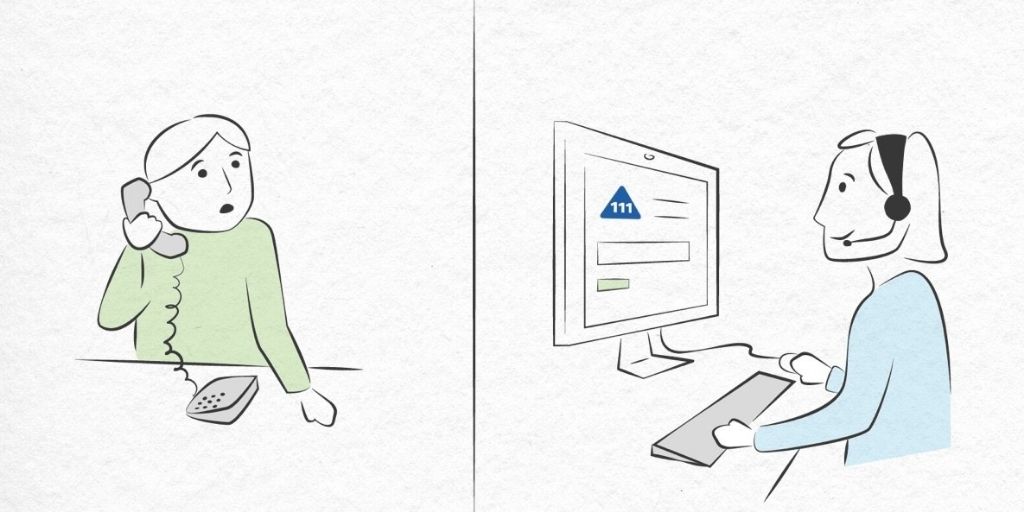
A service design research project led by Bristol, North Somerset and South Gloucestershire (BNSSG) Healthier Together Partnership has seen a significant reduction in the number of people visiting urgent care after calling NHS 111 (estimated at around 70%).
In response to winter pressures on urgent care due to Covid-19, the NHS needed to reduce the risk of infection in busy waiting rooms. Health systems were asked to divert demand towards telephone and online triage (111) to prevent overcrowding and manage demand.
To test and refine ways people might access urgent care using 111, the Healthier Together Partnership worked with user centred design specialists, Mace & Menter to develop, test and refine the changes. The team wanted to quickly understand how users would react to contacting 111 for a time to arrive, and how they might adapt to the new behavioural pathways.
Alex Ward-Booth, Head of Insight & Engagement, BNSSG CCG ICS said: “This project has enabled us to bring the voice of patients and service users to life and demonstrate the value of applying design thinking at an early stage In transformation programmes. The findings have been taken on board at all levels in the organisation and the recommendations have fed into the way we approach communications, messaging and long-term plans for the service.”
Project outcomes
- The project identified problems and possible solutions faster than ever before, the teams quickly prioritised issues, agreed and implemented changes
- It led to a pilot scheme where 111 calls were triaged by clinicians rather than algorithms resulting in a significant reduction in the number of people visiting urgent care after calling 111 (estimated at around 70% reduction)
- The project gathered evidence for a business case to recruit people to work as NHS representatives in local communities helping people to access healthcare
- The project inspired cultural change and investment in an internal user experience capability / lab.
Working as one team
Testing anything conceptual relating to health is difficult. To immerse participants in realistic use cases, Mace & Menter designed a series of scenarios and used the storyboards to walk people through the process. They used mood boards to capture feelings, thoughts and likely behaviours.
The research and design team collaborated with stakeholders and frontline staff throughout and worked as one team to create a prototype consisting of annotated storyboards and realistic scenarios to communicate the new ‘call NHS 111 first’ concept.
Researchers conducted in depth-interviews with research participants and walked through the storyboards exploring reactions. They captured thoughts, feelings and typical behaviours at each step. They also tested reactions to campaign messaging to be used in posters and social media.
Mace & Menter went on to run co-design workshops with clinical, operational and reception staff involved in urgent care to conceive ways of addressing the pain-points, barriers and opportunities identified.
Next steps for 111
Based on the project, the design of 111 pathways in BNSSG CCG ICS became more ‘people-centred’; following the work, a pilot scheme was introduced which changed the way patient calls were managed, from one led by algorithm to one which included clinician assessment. This pilot scheme significantly reduced the volume of patients presenting in emergency departments after calling 111 (it was estimated that volumes reduced by around 70% as a result of the pilot).
New behavioural interventions were developed – insights from the project fed into a business case for recruiting a team of navigators; representatives to work as champions for the NHS within local communities, helping people to access the most appropriate healthcare.
The project also inspired significant cultural change – it demonstrated the value of taking a people-centred approach to service design and delivery across the board. Following this initial project, the organisation has begun developing a User Experience Lab, to develop common user-centred-design approaches and guidance and share best practice across the South West.
Amplifying the voice of the patient
Sam Menter, Founder of Mace & Menter, added: “Experience is key, so we worked hard to understand the emotional and practical impact of the proposed changes on the patient experience. Using service design techniques such as storyboarding, prototyping and qualitative research we were able to understand why people were behaving in certain ways as well as how they might react.
“Integrating with the NHS team allowed us to share skills, knowledge and mindsets and really highlighted the value of understanding the patient experience. Everyone involved in the project was super-motivated to improve things and create change, and that led to a great outcome.”












